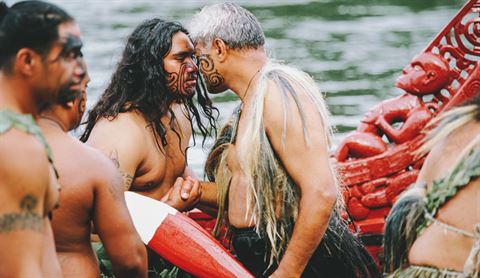Smart travel tips • May 2017
The Club’s guide to global greetings
It seems the simplest of rituals, and yet greeting someone when you’re travelling can be a hazardous process. When do you go in for the kiss? When do you restrain yourself with a handshake? And whom do you greet with a bow? The most troubling part of this ordeal is that greeting customs vary not only across the world, but sometimes even throughout a single country, such as France – four kisses in Nantes, three in Montpellier, two in Strasbourg. Travel writer Ben Groundwater deciphers the art of saying ‘hello’ on your travels
The handshake
In much of the Anglo-Saxon world, from the UK to Australia, Canada to the USA, the accepted way to greet someone you’ve never met is with a simple handshake. This holds true in India as well, though you shouldn’t use too much force in your grip. The opposite applies in Russia, where men will engage in a vice-like clench of macho prowess on first meeting to display their strength. In much of northern Europe, a handshake will suffice as a greeting, particularly between men.
The hug
This form of greeting is probably most prevalent in that haven of anything-goes hellos: the USA. Here you can hug someone you don’t know as a way of greeting them. You could also shake hands, kiss them on the cheek, nod politely or give them a fist-bump. It’s your call.
The kiss
Greeting friends in Belgium or the Netherlands? Be prepared to dish out three kisses. In Greece, it’s a single kiss and a slap on the back. In the UK you might go for two kisses if you know the person well, or one for a mere acquaintance. In Italy, Spain and Portugal a well-aimed peck on the cheek (or a swift one on each) should do the job, and the same goes for Argentina, including between men who know each other. The Brazilians, meanwhile, go for a more flamboyant three smooches. In the Middle East, air kissing is de rigueur.

In Japan how low to go, that is the question. Photo: Getty Images
The bow
Even knowing, as you probably do, that people in Japan greet each other with a bow, you could still cause offence here by not understanding how low to go. To your peers, a slight tilt forward is fine, but to an elder or superior at work, a more extravagant bending of the waist, with arms by your sides, is expected. The Thais and Cambodians also greet each other with a bow, only with their hands pressed together in a praying motion in front of their chests.

Head to head: a traditional Maori way of greeting. Photo: Alamy
The nose press
Just when you think you have all the possible greeting combinations mastered, along come New Zealand’s Maoris (above). To greet a Maori in the traditional way, press your nose and forehead to theirs – not something you’ll want to do, of course, with every Kiwi you meet.
This article has been tagged Opinion, Travel Tips
